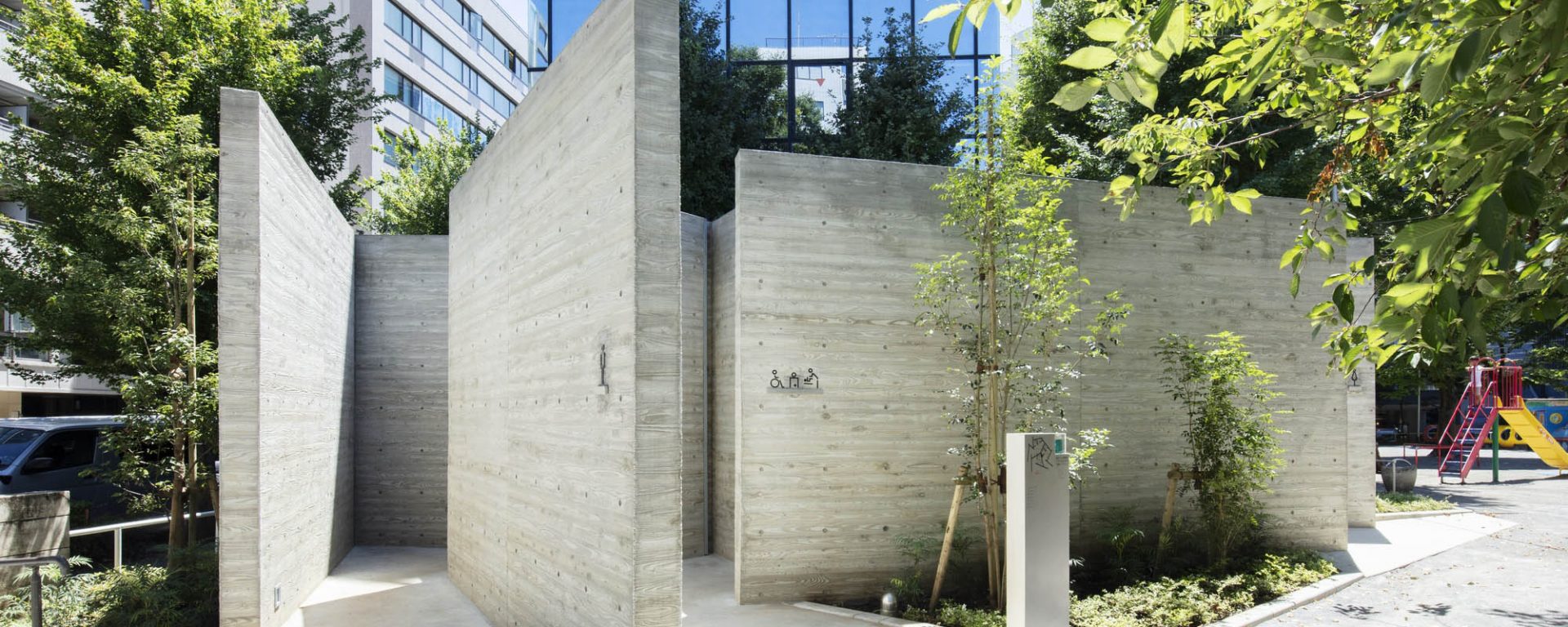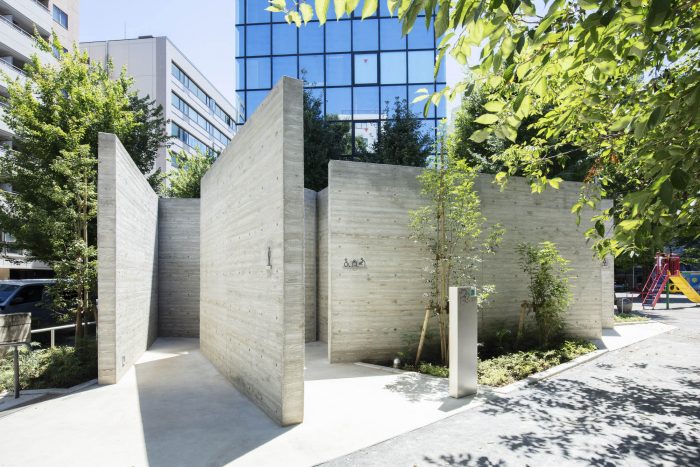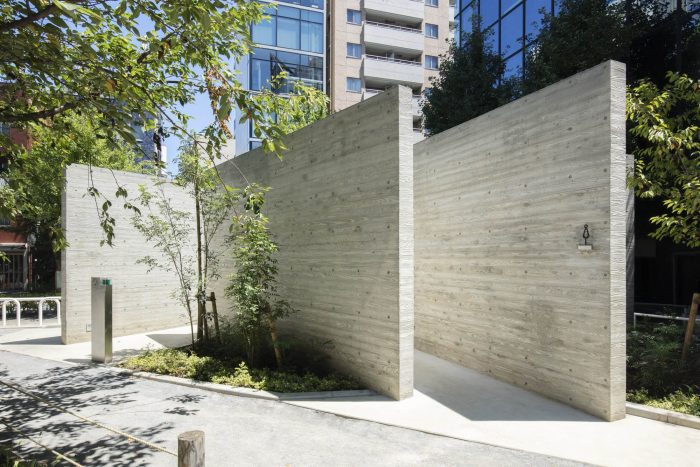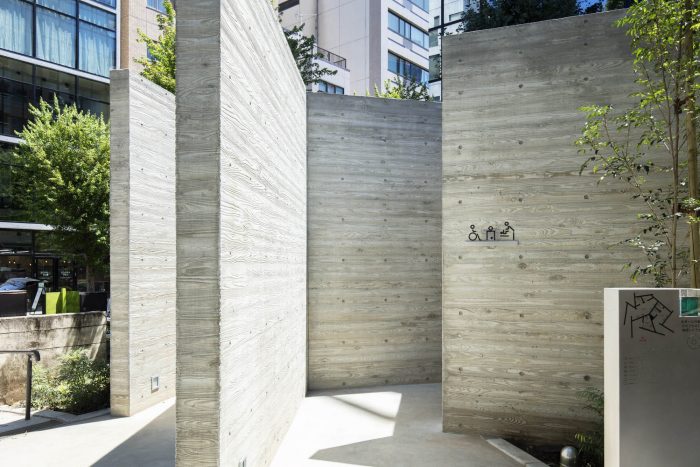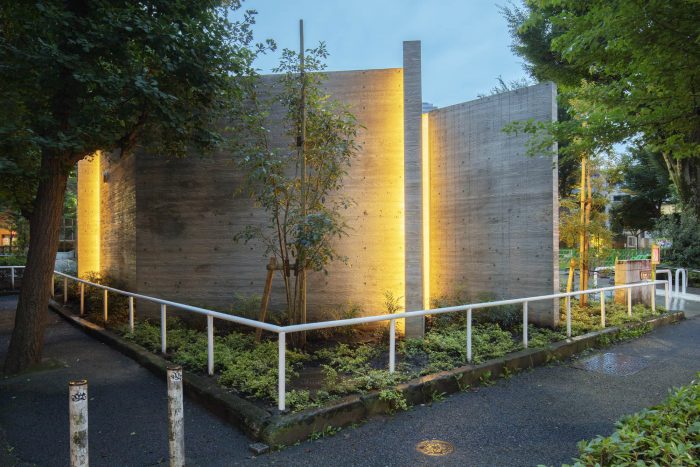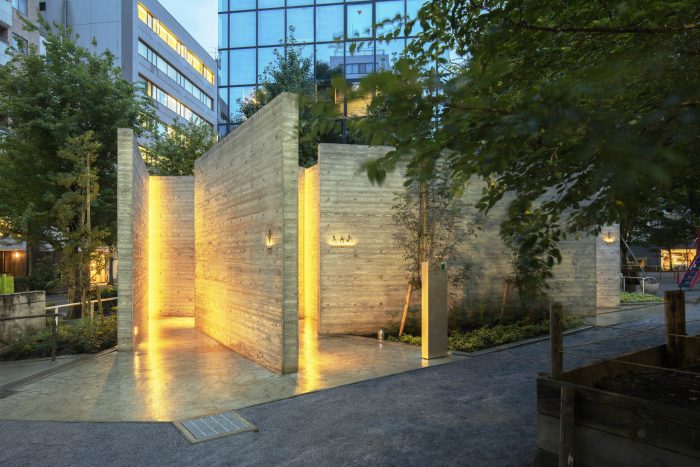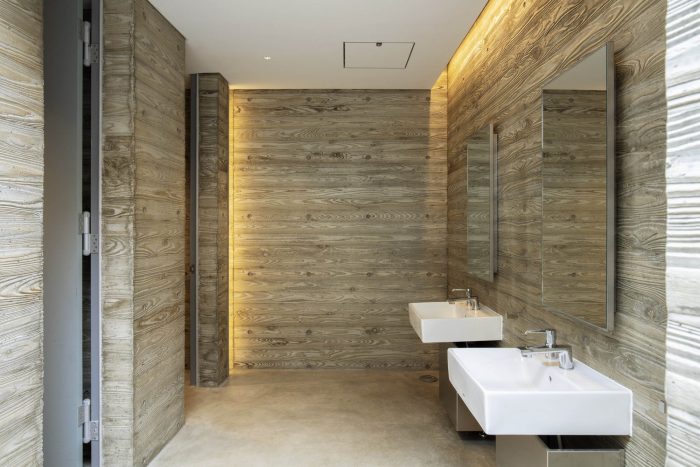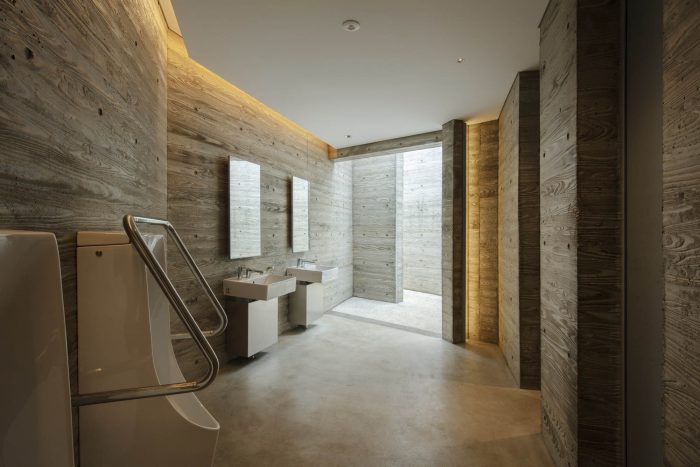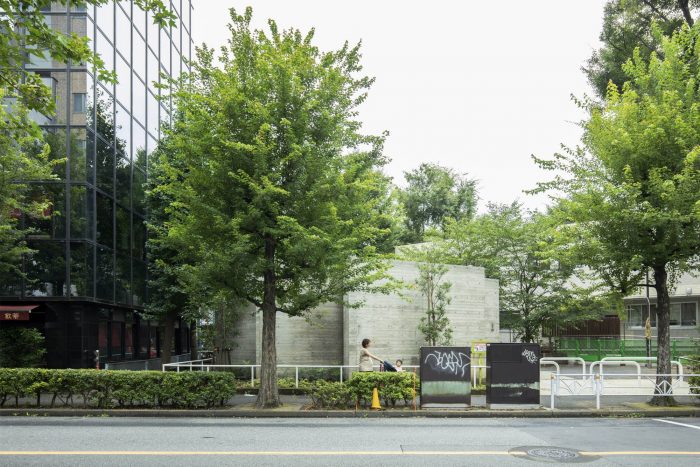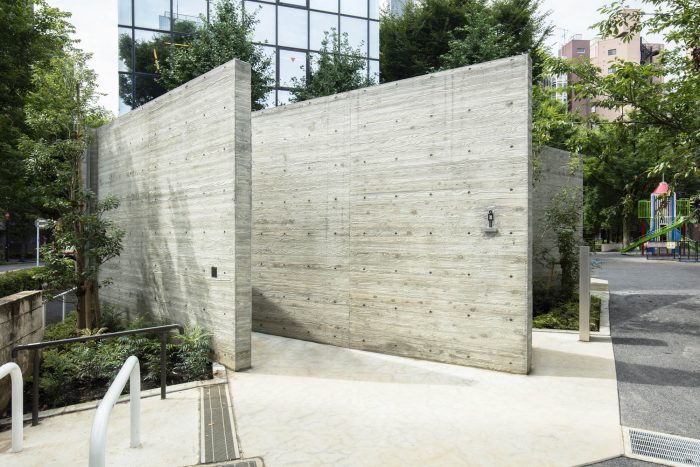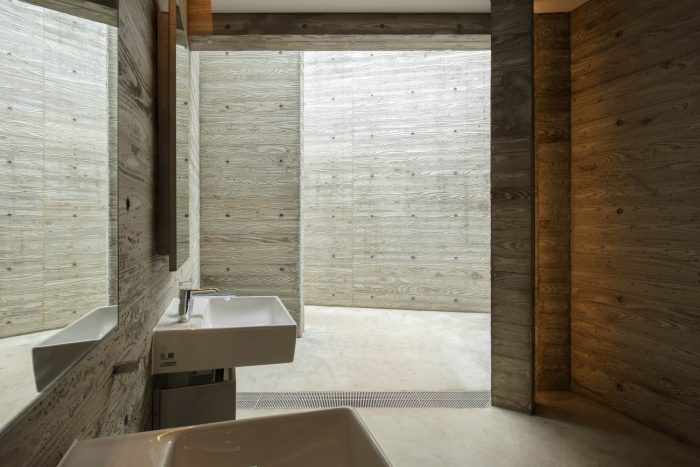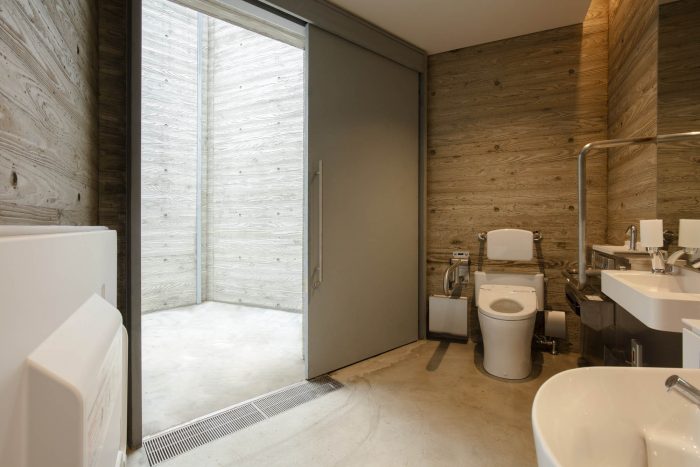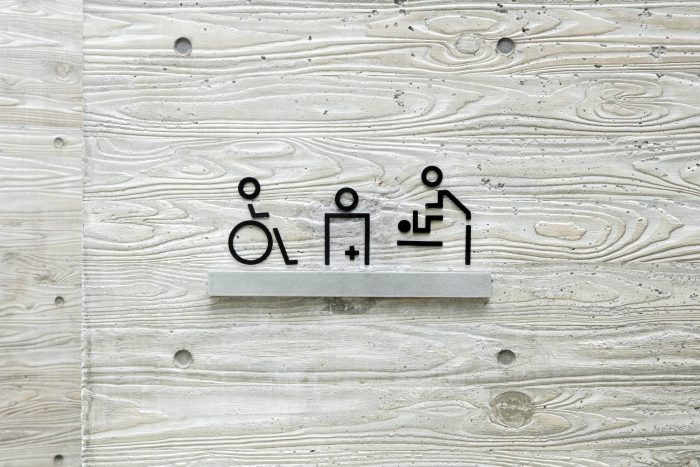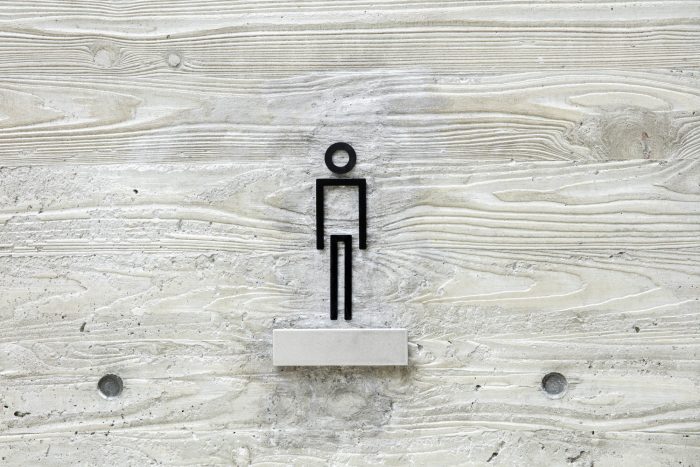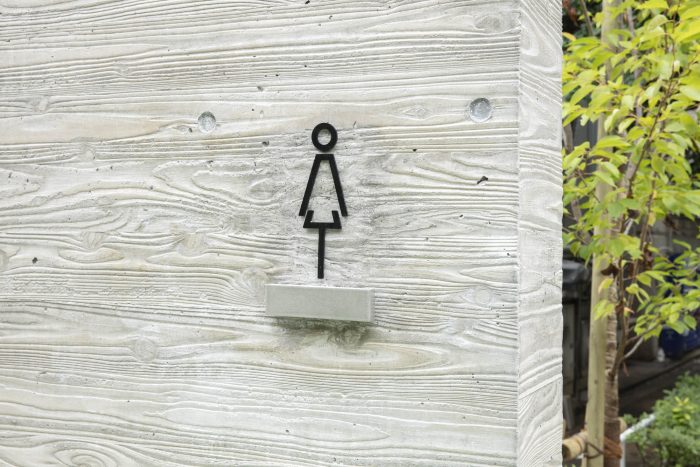这是一个关于惠比寿公园内公共厕所的设计方案。该提案是涉谷市THE TOKYO TOILET项目的一部分。我们牢记一个与建筑概念和元素保持距离的设施:一个随意矗立在公园里的物体,就像操场设备、长椅或树木一样。
“Modern Kawaya”
This is a design proposal for a public toilet inside Ebisu Park. The proposal is part of Shibuya City’s THE TOKYO TOILET project. We kept in mind a facility that distances itself from architectural concepts and elements: an object that stands casually in the park as if it were playground equipment, benches, or trees.
在日本,厕所的起源是kawaya,最初写成川屋,后来写成厠所(也读作kawaya)。川屋是一种矗立在河边的小屋(ya 屋),可以追溯到新石器时代的早期绳文时期(公元前10,000年至6,000年)。这些小屋的设计原始而简单,通常由硬化的土壤或木片捆绑而成。
In Japan, the origin of toilets is kawaya, written initially as 川屋 and later 厠 (also pronounced kawaya). Kawaya was a hut (ya 屋) that stood over the river (kawa 川) dating back to the Neolithic times of early Jomon period (10,000 to 6,000 BCE). These huts were of primitive and simple designs, often made of hardened soil or pieces of wood bound together.
我们试图设想过去原始卡瓦屋的外观和氛围,通过随机组合15面混凝土墙,建造了一个 “模糊空间”,它同时是一个物体和一个厕所。墙壁之间的空间引导用户进入为男性、女性和所有人设计的三个不同区域。该设计创造了一种独特的关系,用户被邀请与该设施互动,就像他们在玩一个好奇的操场设备一样。
Trying to envision the appearance and atmosphere of the primitive kawaya of the past, we built an “ambiguous space” that is simultaneously an object and a toilet by randomly combining 15 concrete walls. The spaces between the walls lead users into three different areas designed for men, women, and everyone. The design creates a unique relationship in which users are invited to interact with the facility as if they are playing with a curious piece of playground equipment.
Architects: Wonderwall
Year: 2020
Photographs: Satoshi Nagare, Courtesy of The Nippon Foundation
Architect In Charge:Masamichi Katayama
Design Team:Wonderwall
Courtesy:The Nippon Foundation
City:Shibuya City
Country:Japan

